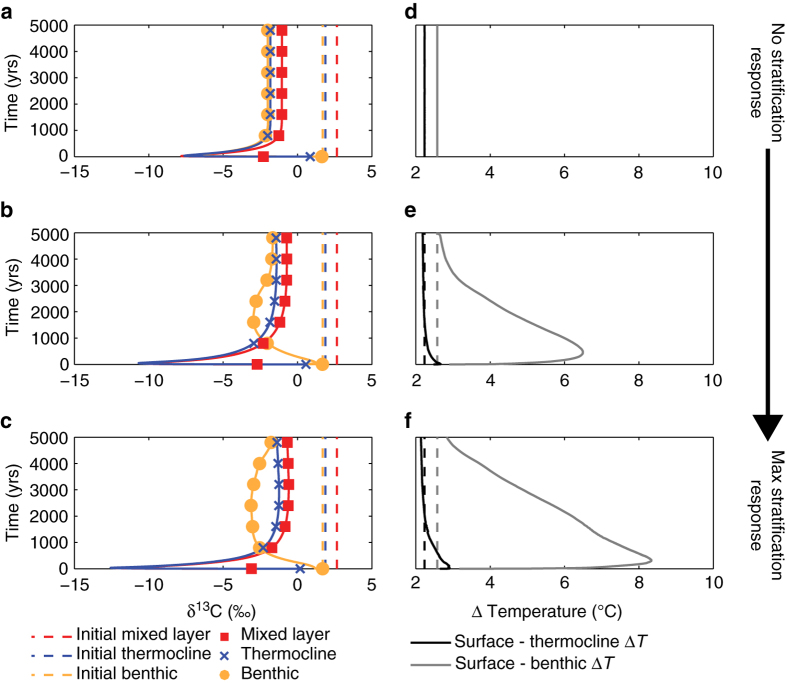Fig. 2.
Enhanced stratification cannot explain substantial delays in propagating an instantaneous PETM δ13C excursion from the surface to the thermocline at ODP Site 690. a, b and c δ13C values recorded in the cGENIE mixed layer (red), thermocline (blue), and benthic (orange) ocean layers in response to injection over a single year of 2275 Pg C with δ13C of −60‰ to the atmosphere. This mass of carbon is sufficient to drive a −4‰ global δ13C excursion based on isotopic mass balance in cGENIE. Model location is equivalent to ODP Site 690 in the South Atlantic. Modeled thermocline and benthic depths are 128 m and 3283 m for Site 690. Fixed radiative forcing in each experiment controls the stratification response: at the equivalent of ×3 (i.e., no stratification response) a, d, ×10 b, e and ×25 c, f preindustrial pCO2. Symbols indicate the record down-sampled at 800-year resolution, consistent with Site 690 data in ref. 8. d, e and f Change in temperature difference between the surface and thermocline (black) and surface and benthic (gray). Dashed lines indicate initial temperature differences and solid lines indicate how temperature gradients evolve with time in response to the imposed temperature change

